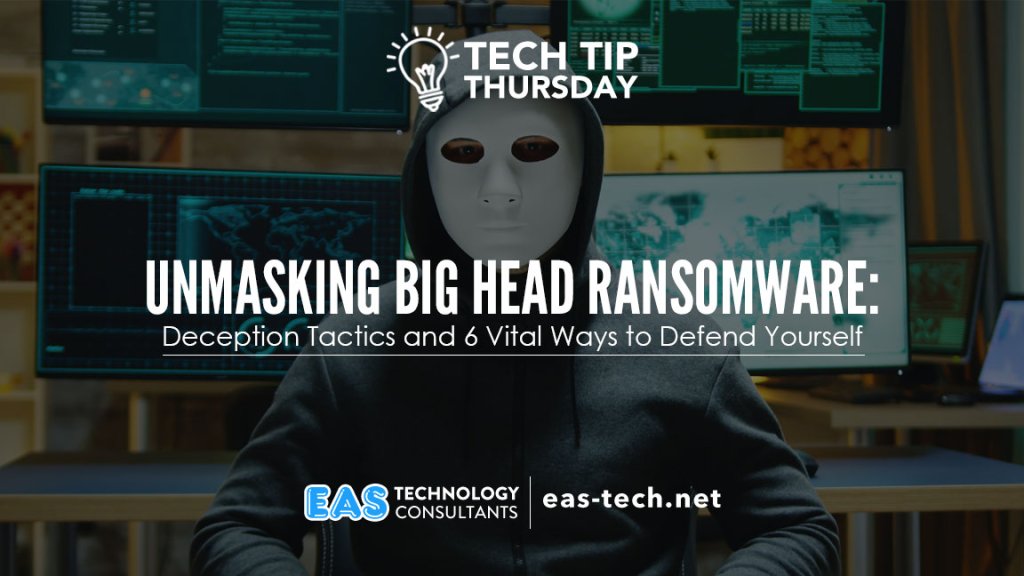
In the ever-evolving landscape of cyber threats, one name has been making waves recently: Big Head ransomware. This malicious software, as its name suggests, preys on its victims with a large-scale, insidious approach. Understanding its deceptive tactics and learning how to safeguard your digital presence is crucial in the face of this growing menace.
Spotting Big Head Ransomware Deception Tactics:
1. Phishing Emails and Malicious Attachments: Big Head ransomware often infiltrates systems through phishing emails. These deceptive messages might appear legitimate, luring victims into clicking malicious links or downloading infected attachments. Constantly scrutinize unsolicited emails, especially if they contain unexpected attachments or urgent requests for sensitive information.
2. Compromised Websites and Malvertisements: Attackers behind Big Head often compromise legitimate websites or use malvertisements (malicious advertisements) to spread malware. Exercise caution when clicking on online ads or downloading files from unfamiliar websites, as these can serve as gateways for ransomware attacks.
3. Exploiting Software Vulnerabilities: Outdated software is a prime target for cybercriminals. Big Head ransomware exploits known vulnerabilities in operating systems and applications. Regularly update your software and enable automatic updates whenever possible to patch security holes and strengthen defenses.
4. Remote Desktop Protocol (RDP) Attacks: Attackers frequently exploit weak RDP credentials to gain unauthorized access to systems. To guard against this, use strong, unique passwords for your accounts and consider implementing multi-factor authentication (MFA) to add an extra layer of security.
5. Social Engineering Tactics: Big Head perpetrators often employ social engineering tactics to manipulate users into granting access or divulging sensitive information. Be wary of unsolicited requests for login credentials, even if they appear to be from trusted sources.
6. Fileless Attacks: Fileless ransomware attacks, where malicious code resides in a system’s memory instead of on a hard drive, are becoming more prevalent. Traditional antivirus software might struggle to detect these threats. Employ advanced security solutions to detect and respond to fileless attacks in real-time.
6 Ways to Protect Yourself from Big Head Ransomware:
1. Educate and Train Employees: Invest in cybersecurity training for employees to recognize phishing attempts and other deceptive tactics. Regular awareness programs can empower your team to identify and report suspicious activities.
2. Implement Robust Security Measures: Deploy reputable antivirus software, firewalls, and intrusion detection systems. Regularly update these tools to ensure they can defend against the latest threats, including Big Head ransomware.
3. Back Up Your Data: Regularly back up important files to an external device or secure cloud storage. In a ransomware attack, having up-to-date backups will enable you to restore your data without succumbing to the attacker’s demands.
4. Update Software Promptly: Enable automatic updates for your operating system and all applications. Timely updates often contain security patches that shield your system from known vulnerabilities, making it harder for ransomware to infiltrate.
5. Restrict User Privileges: Limit user privileges to only what is necessary for their roles. Users with elevated privileges should be especially vigilant, as they are high-value targets. Restricting permissions can prevent attackers from accessing sensitive systems and data.
6. Employ a Robust Incident Response Plan: Prepare for the worst-case scenario by developing a comprehensive incident response plan. Ensure your team knows the necessary steps to take in the event of a ransomware attack, including how to isolate affected systems and report the incident to relevant authorities.
In conclusion, the threat of Big Head ransomware is real and growing. By staying vigilant, educating yourself and your team, and implementing a robust cybersecurity strategy, you can significantly reduce the risk of falling victim to these deceptive tactics. Remember, proactive measures are your best defense in the ever-changing landscape of cybersecurity threats. Stay informed, stay secure.
